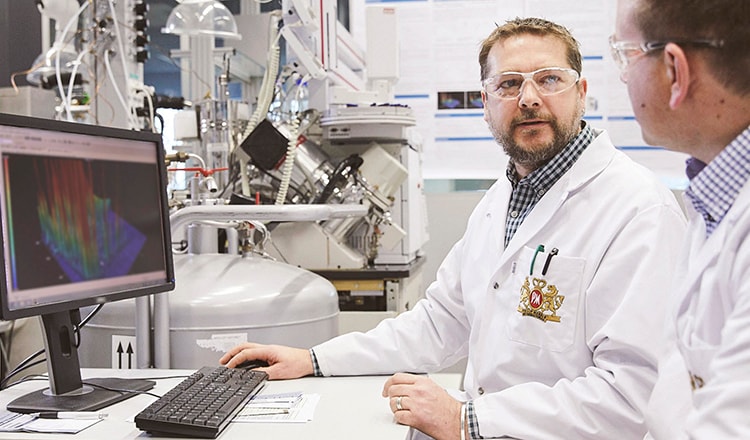How we assess the health impacts of our products
The team led by Philip Morris International’s Chief Medical Officer assesses the harm reduction potential of our better alternatives to smoking in controlled clinical studies and in the real world.
“It would be one of the biggest public health impacts that has ever happened”
Dr. Patrick Picavet and his team explain how their vital research on the health impacts of switching from cigarettes to smoke-free products helps assess the potential impact on individuals and society.
How tobacco harm reduction can positively impact public health
Music starts
Voiceover starts speaking:
If tobacco harm reduction works it would be one of the....
Patrick Picavet, Chief Medical Officer, Philip Morris International, sits down and carries on speaking to camera:
...biggest public health impacts that have ever happened and I wanted to be part of that.
The words ‘assessing the health impacts of our products’ is seen on screen.
Lindsay Reese, Publications Manager, Philip Morris International, speaks to camera:
Big tobacco of 50 years ago is very different than what we are today.
Voiceover says:
What we do here is transparent science
Patrick Picavet speaks to camera:
We want to be an active part of the scientific community.
Marina Suvakov, Global Head Safety Surveillance, Philip Morris International, speaks to camera:
We really are focusing on the consumer from start to finish.
Christelle Haziza, Global Head Scientific and Medical Affairs, Philip Morris International, speaks to camera:
It's surprising sometimes to see that scientific people or medical doctors, they are not even aware that the data are existing on smoke-free products.
Emilija Velikovic, Manager Scientific and Medical Affairs, Philip Morris International, speaks to camera:
Typically, people are surprised when they see what type of science we do here at Philip Morris.
Adam Lenart, Manager Population & Public Health Research, Philip Morris International, speaks to camera:
In clinical trials, you can you know possibly look at a relatively small number of people.
Patrick Picavet speaks to camera:
And you collect the data specifically for the study
Adam Lenart speaks to camera:
But with real word data we have the option to look at millions of people
And you know, millions of people well they got to tell you something.
Emilija Velikovic speaks to camera:
That's why we are trying to generate science of high quality to be able to communicate what those differences are between conventional cigarettes and the products that we are developing.
Lindsay Reese talks to camera:
Our team works to take all that science that we've rigorously assessed and analyzed and then bring it into a form that's more accessible.
Voiceover continues:
People don't need to trust us.
They can look at the data evaluate for themselves and see what conclusions they would draw.
Marina Suvakov speaks to camera:
There is nothing that we're doing that we keep for ourselves. Everything is shared and I think that leads to trust over time.
Patrick Picavet speaks to camera:
It's not about creating another addictive product
It is about you know getting people away from smoking combustible cigarettes today.
Marina Suvakov speaks to camera:
The end goal for us is to no longer sell cigarettes and make sure that our consumers have better alternatives.
Christelle Haziza speaks to camera:
I would love regulators to act and to help us to make a cigarette obsolete.
Lindsay Reese talks to camera:
I'm young enough that I think I will be here to see the last cigarette roll off the line at Philip Morris.
Patrick Picavet speaks to camera:
This ability to influence so many people in one go, this is a once in a lifetime, you know, opportunity and frankly you don't get it, you know, that often in your life.
Philip Morris International’s logo is seen on screen.
The words delivering a smoke-free future appear on screen.
Q&A with Dr. Patrick Picavet, PMI’s Chief Medical Officer
“Why should those outside PMI trust your results?”
“What do you expect your studies to show in the coming years?”
“Is ‘real-world evidence’ a PMI creation, or do health organizations use it?”





